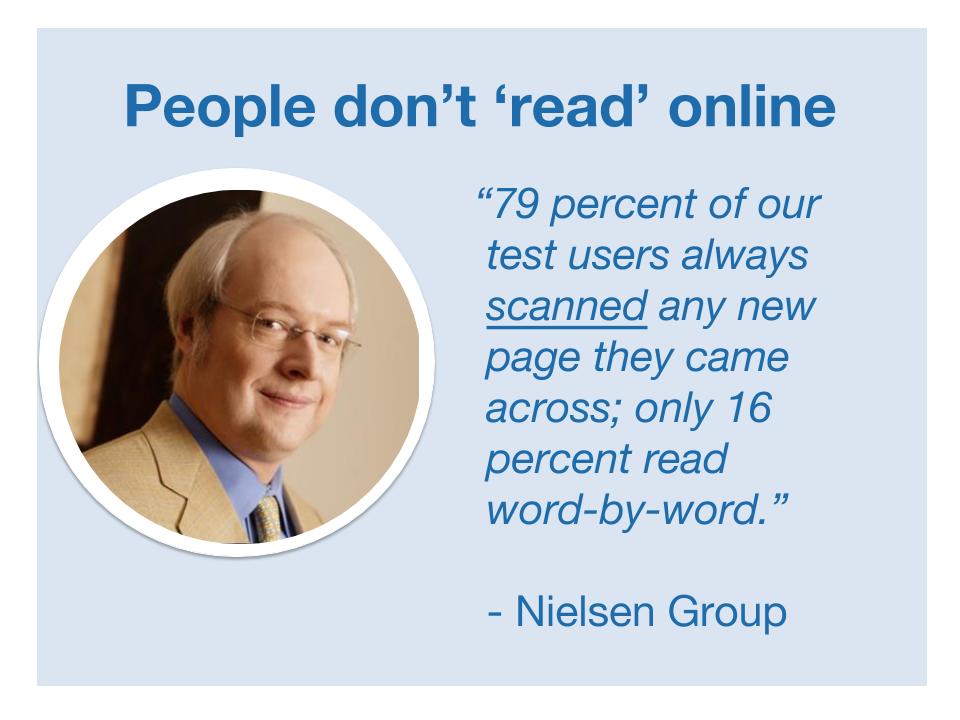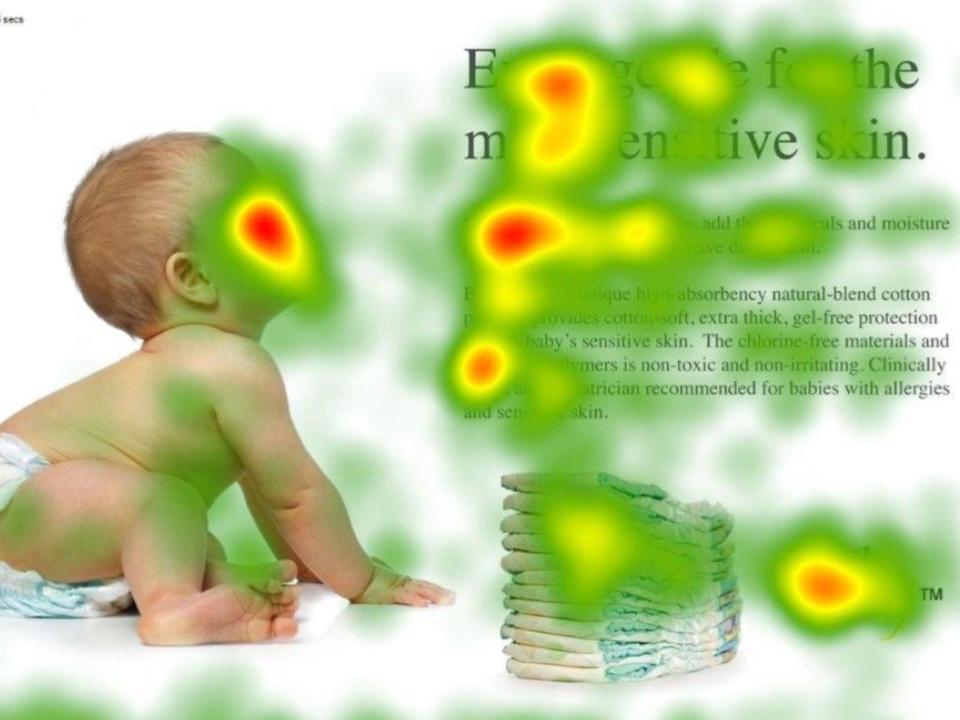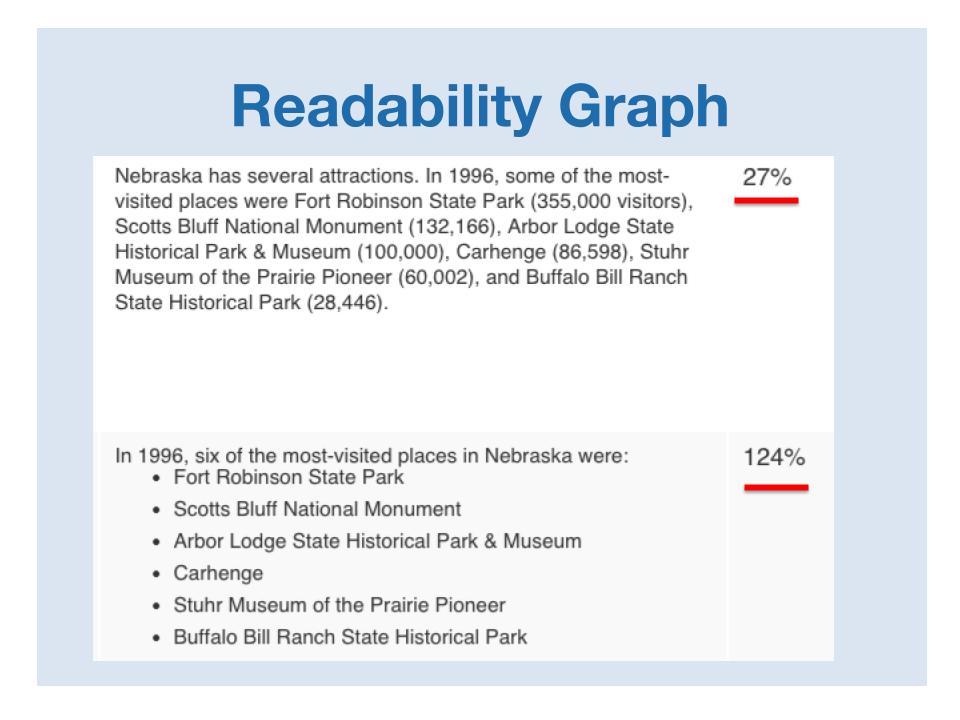People don’t read online. They skim, scan and scroll pages.The Nielsen Groupis a research institute and they do a lot of heavy data testing about web usability. Jakob Nielsen says 79 percent of test users always scanned any new page they came across. Only 16 percent of people read word by word.
 Below is an example of a what we call a heat map. Heat maps track visitors eye movement on a webpage. As you can see, people online aren’t reading left to right, top to bottom of the page, like a book. Their eyes are jumping all over the place. And the areas where it’s really red, that’s where most of the attention is going to. Notice how the attention is going to the top of the page and also to the baby’s face?
Below is an example of a what we call a heat map. Heat maps track visitors eye movement on a webpage. As you can see, people online aren’t reading left to right, top to bottom of the page, like a book. Their eyes are jumping all over the place. And the areas where it’s really red, that’s where most of the attention is going to. Notice how the attention is going to the top of the page and also to the baby’s face?

Notice how the baby is looking at the headline? Thatâ��s no accident. Studies show that we are likely to follow a personâ��s gaze to see what theyâ��re looking at. So, if the babies face is looking at the copy, that’s going to get the attention because we’re going to first notice the picture then we’re going to follow the trail up to the all important headline.
5 Tips On How To Write For The Web
Here are five tips for writing for the web. Whenever you’re writing web copy, about to launch a new website, or send out an email promotion, be sure to follow these five tips.
1. Highlighted keywords
Highlighted means bolded, underlined or italicised keywords. I’m not talking about SEO (search engine optimization). What I’m talking about is highlighting certain words so they stand out to your website visitors. So, when someone’s scrolling the page the words you’ve highlighted are going to get their attention.
2. Subheadings
Subheadings are what you see when you scroll down a page. The reason to have subheadings is to break up the copy, draw your visitors in, and get them to start reading.
If they scroll the page, and they’re just reading subheadings, they should have a general idea of what the whole page is about. Which means you want to have meaningful subheadings throughout the page, not clever or cute subheadings.
3. Bulleted lists

Look at this readability graph [provided by the Nielsen Group]. What they did was they took this information, which has a 27 percent readability score and then presented the same information in a bulleted list. The result?
Readability increased by almost 100 percent! The same information just formatted differently, improved readability by 100 percent.
Because attention spans are getting shorter and shorter people don’t have time to read all of the copy, word for word. Copy is important but it needs to be formatted for the web. Having bulleted lists throughout your web copy is a great way to achieve that.
4. One Idea Per Paragraph
Don’t make the mistake of trying to say too much in a single paragraph. If you have multiple messages in the same paragraph then you will probably confuse your readers.
Each paragraph should present a different idea or message instead of trying to say everything in one paragraph. So, remember, one idea per paragraph. Which brings me to the final tip, which is probably the biggest difference between writing online and offline copy.
5. Half The Word Count Of Offline Copywriting
If you’re writing offline copy (like a brochure) you can have twice as much copy. When writing for the web, you should try and have less copy (and this is controversial because later I’m going to say long copy outsells short copy). The most important thing is that web copy needs to be easy for the scanners and the scrollers to read.